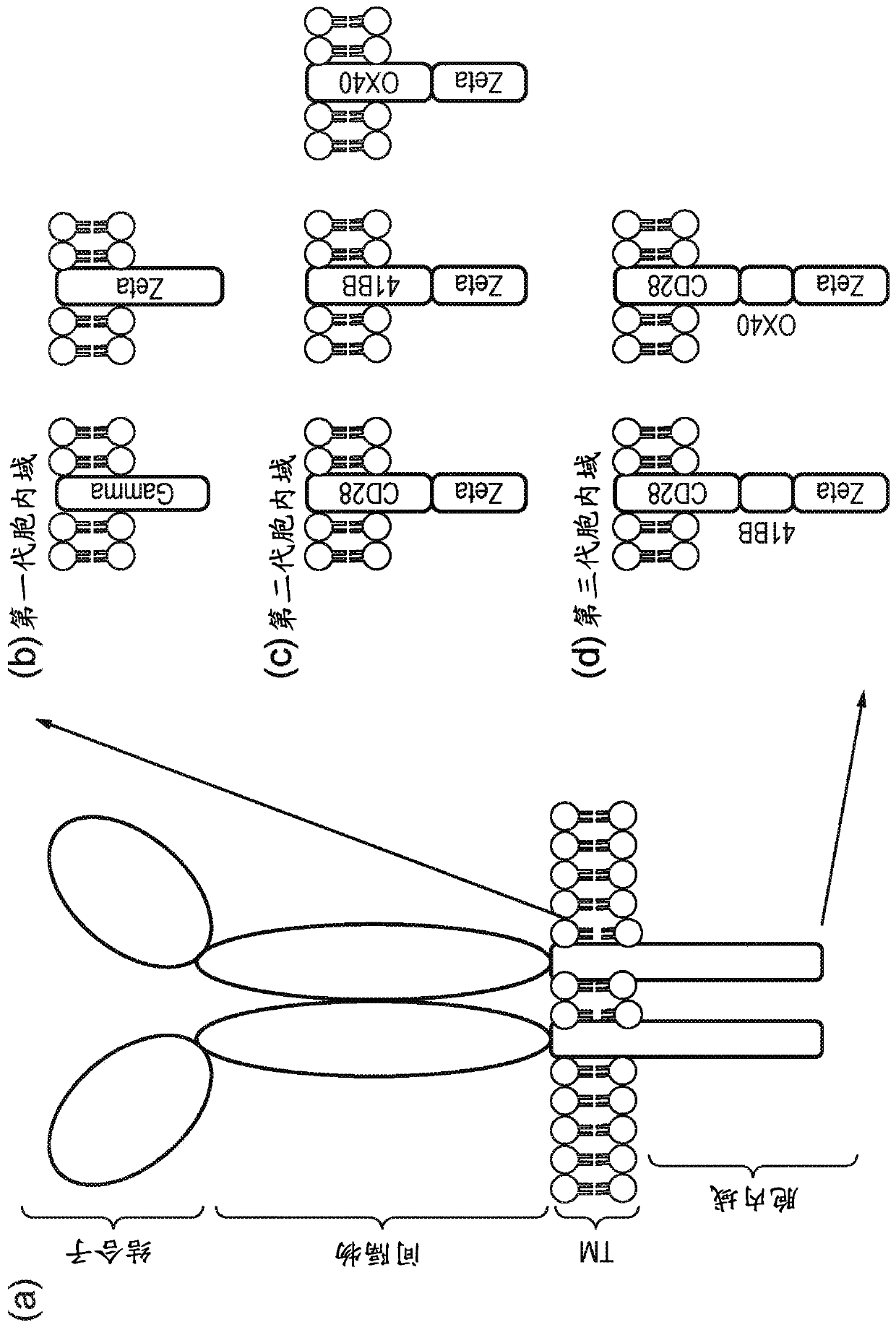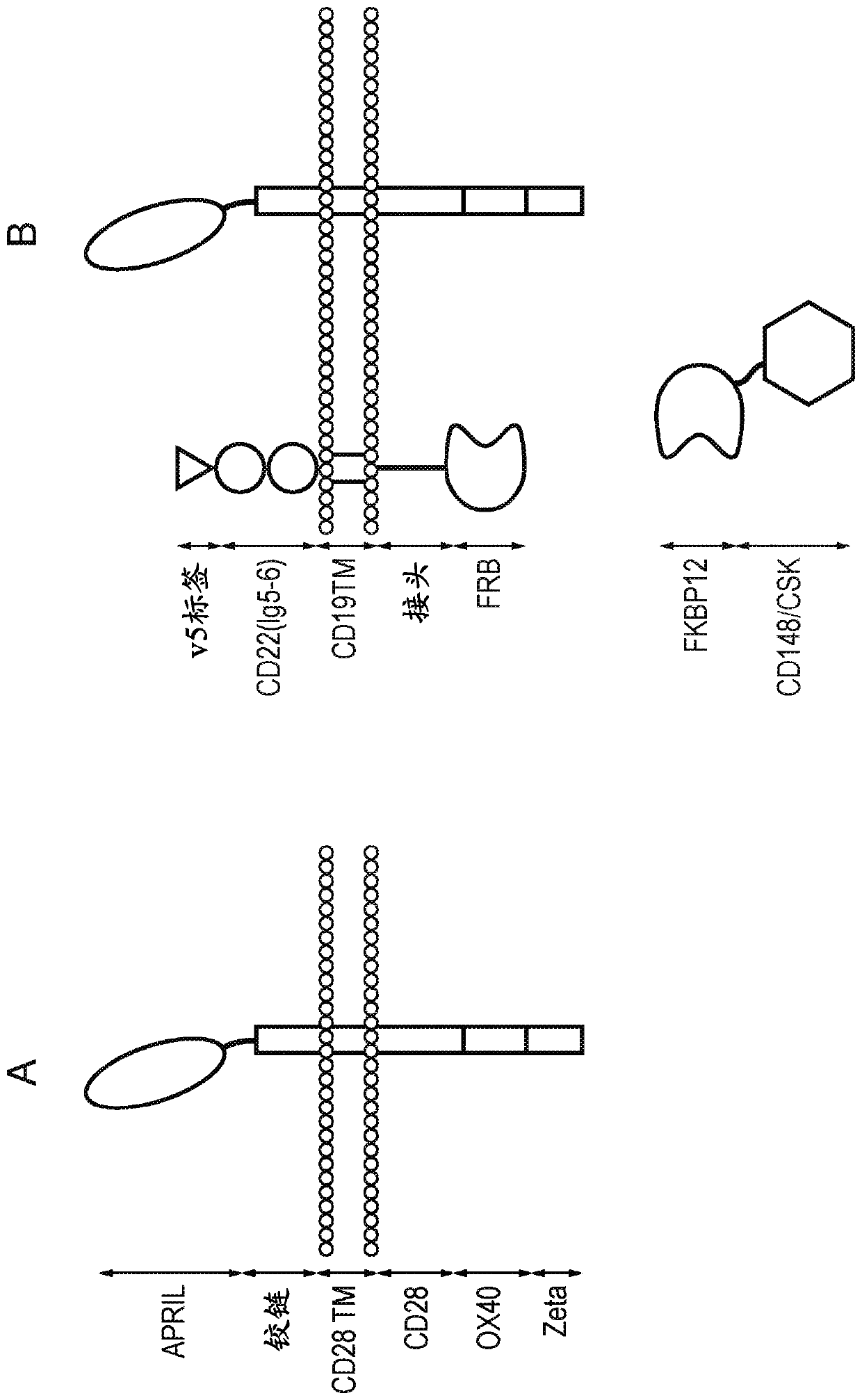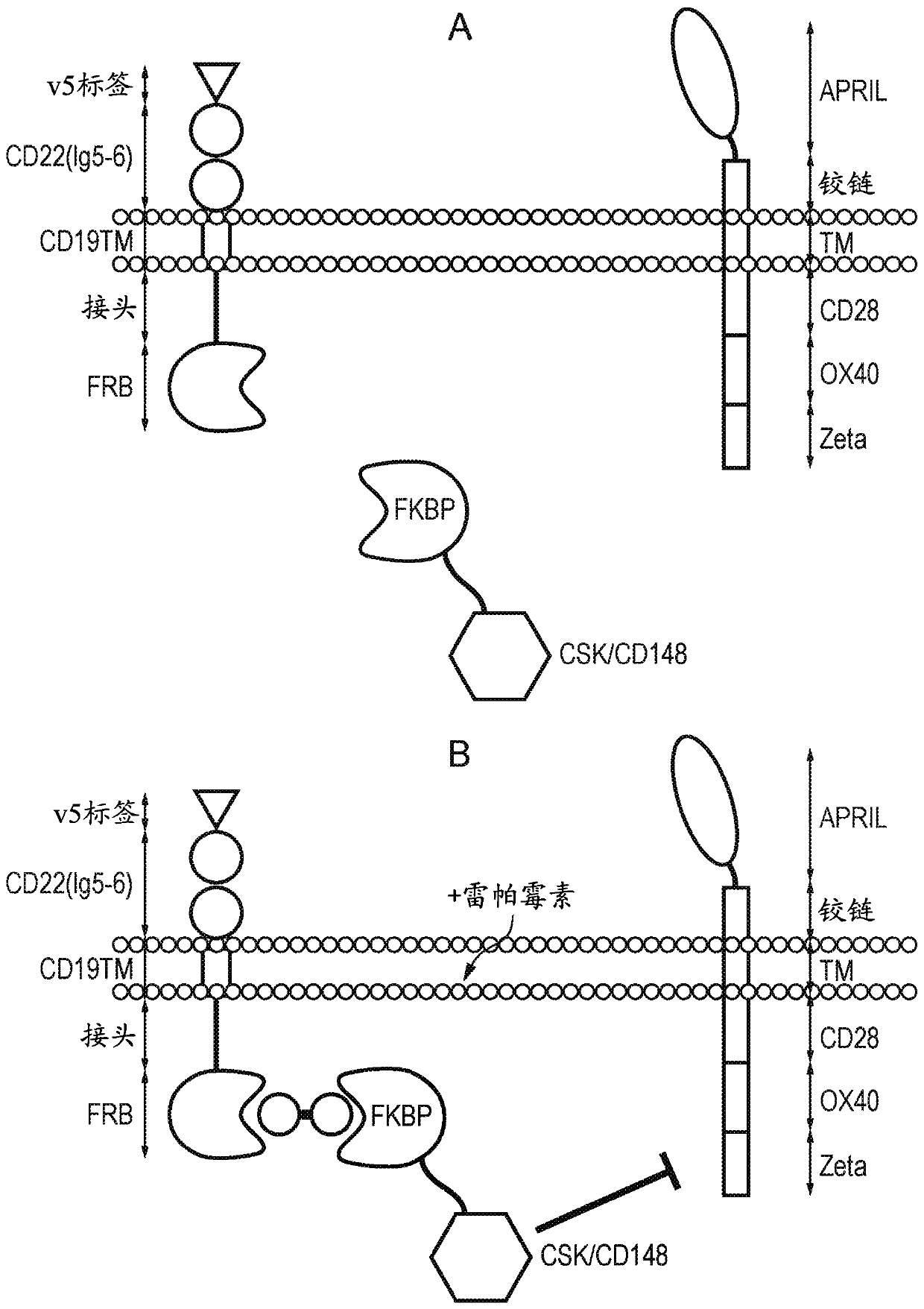Cell comprising chimeric antigen receptor (CAR)
A technology of chimeric antigen receptors and cells, applied in the field of cells, can solve problems such as inability to work, fast suicide genes, and unclear immunotoxicity of suicide genes
- Summary
- Abstract
- Description
- Claims
- Application Information
AI Technical Summary
Problems solved by technology
Method used
Image
Examples
Embodiment 1
[0575] Example 1 - Functionality of the Rapa-Off Inhibition System
[0576] The tricistronic construct is expressed as a single transcript with the following structure:
[0577] SFGmR.V5_tag-CD22(2Ig)-CD19tm-RL-FRB-2A-FKBP12-L-CD148endo-2A-CAR
[0578] This self-cleaves at site 2A into a signaling inhibitory component containing FKBP12, a membrane-tethered component containing a transmembrane domain and an intracellular FRB domain, and an anti-CD19 second-generation CAR.
[0579] This construct was expressed in BW5 cells. SupT1 cells (CD19 negative) were engineered to be CD19 positive to give target negative and positive cell lines as similar as possible. Primary human T cells from 3 donors were transduced with two CAR constructs: (i) a "classical" anti-CD19 CAR; (ii) the tricistronic "repressible" CD19 CAR system described above. Non-transduced T cells and T cells transduced with different CAR constructs were challenged 1:1 with SupT1 cells or SupT1.CD19 cells in the pre...
Embodiment 2
[0582] Example 2 - Functionality of the Tet-ON suppression system
[0583] The tricistronic construct is expressed as a single transcript with the following structure:
[0584] SFG.TIP-L(16aa)-CD148endo-2A-V5-tag-CD22(2Ig)-CD19tm-RL-TetRB-2A-CAR
[0585] This self-cleaves at site 2A into a signaling inhibitory component containing TiP, a membrane-tethered component comprising a transmembrane domain and an intracellular TetRB domain, and an anti-CD19 second-generation CAR.
[0586] This construct was in BW5 cells, which were then challenged with wild-type SupT1 cells or SupT1 engineered to express CD19 using the method described in Example 1 in the presence or absence of tetracycline.
[0587] Such as Figure 5 and Figure 6 As shown in , in the "Tet-ON" inhibitory system in the presence of tetracycline, signaling inhibitory components diffuse freely in the cytoplasm and CAR-mediated signaling can occur. In the absence of tetracycline, the signaling inhibitory component d...
Embodiment 3
[0588] Example 3 - Functionality of the Rapa-Off Inhibition System with Anti-BCMA CAR
[0589] The tricistronic construct is expressed as a single transcript with the following structure:
[0590] SFGmR.V5_tag-CD22(2Ig)-TM-FRB-2A-FKBP12-CD148endo-2A-CAR
[0591] This self-cleaves at site 2A into a signaling inhibitory component containing FKBP12, a membrane-tethered component containing a transmembrane domain and an intracellular FRB domain, and a proliferation-inducing ligand (APRIL) with a BCMA-based natural ligand Anti-BCMA third-generation CAR with the antigen-binding site.
[0592] This construct was expressed in BW5 cells. SKOV3 cells were engineered to be BCMA positive for use as target cells. Primary human T cells from 2 donors were transduced with two CAR constructs: (i) the "classical" anti-BCMA CAR; (ii) the tricistronic "repressible" BCMA CAR system described above. Untransduced T cells and T cells transduced with different CAR constructs were challenged 8:1 ...
PUM
 Login to View More
Login to View More Abstract
Description
Claims
Application Information
 Login to View More
Login to View More - R&D
- Intellectual Property
- Life Sciences
- Materials
- Tech Scout
- Unparalleled Data Quality
- Higher Quality Content
- 60% Fewer Hallucinations
Browse by: Latest US Patents, China's latest patents, Technical Efficacy Thesaurus, Application Domain, Technology Topic, Popular Technical Reports.
© 2025 PatSnap. All rights reserved.Legal|Privacy policy|Modern Slavery Act Transparency Statement|Sitemap|About US| Contact US: help@patsnap.com



